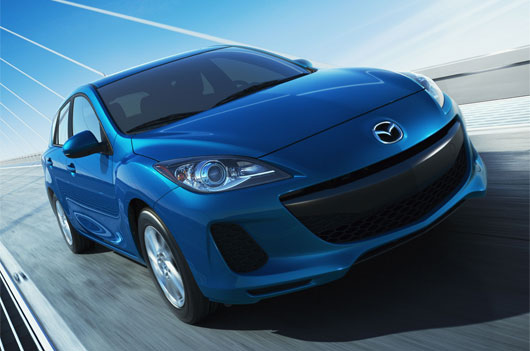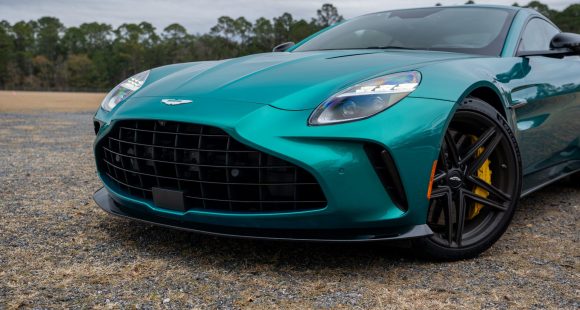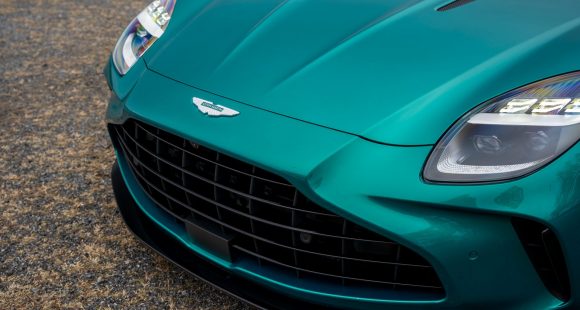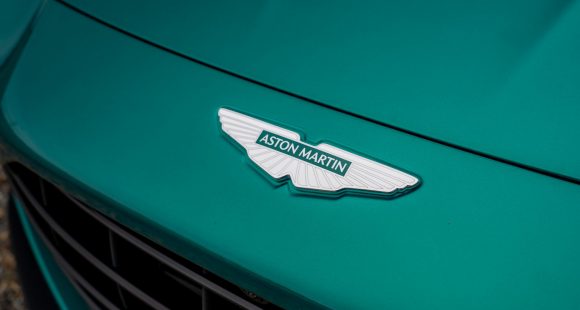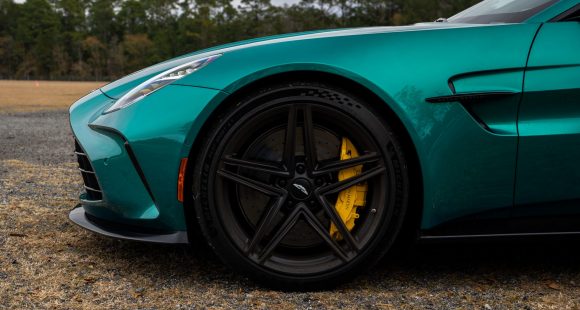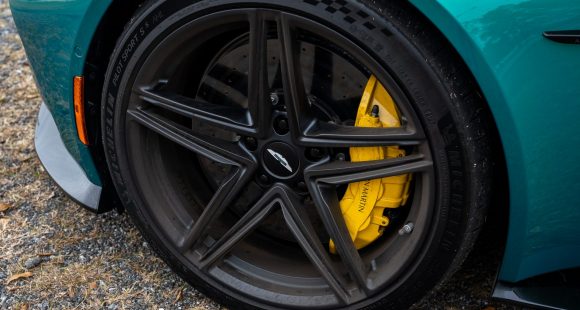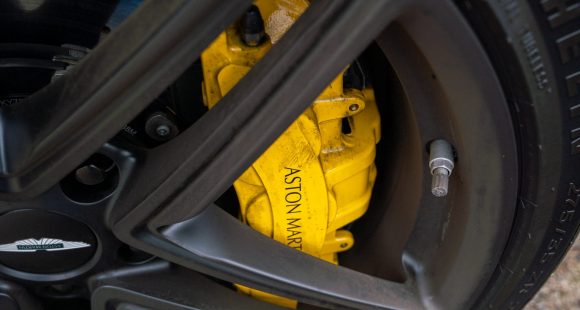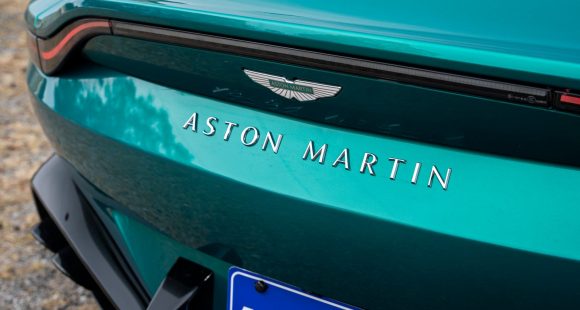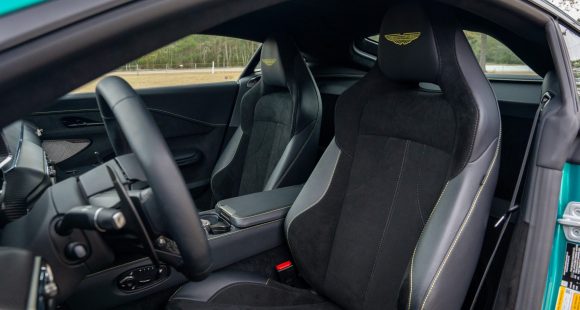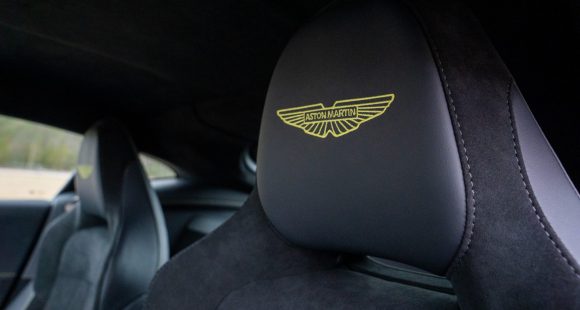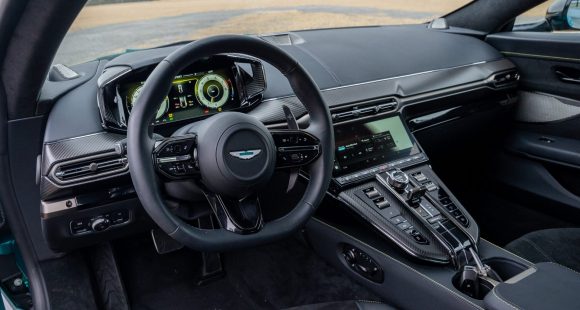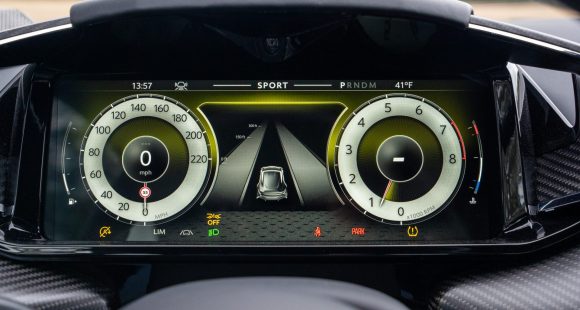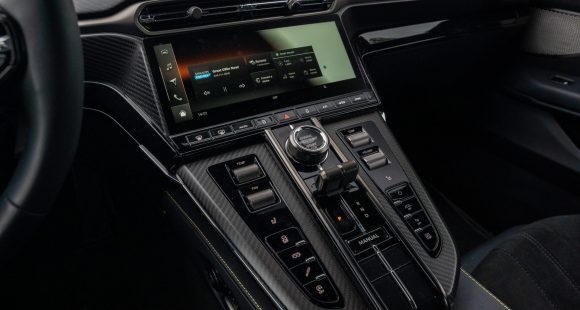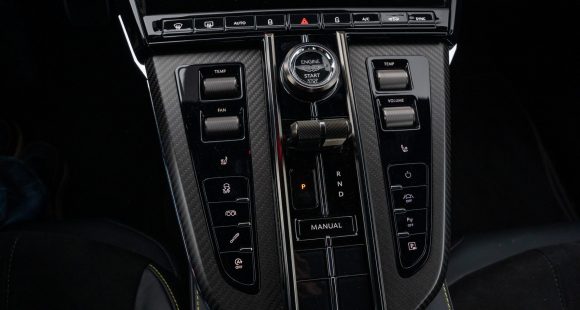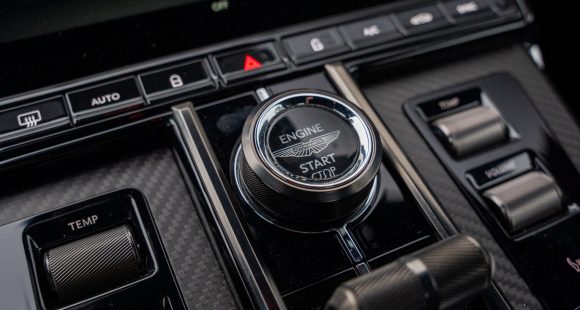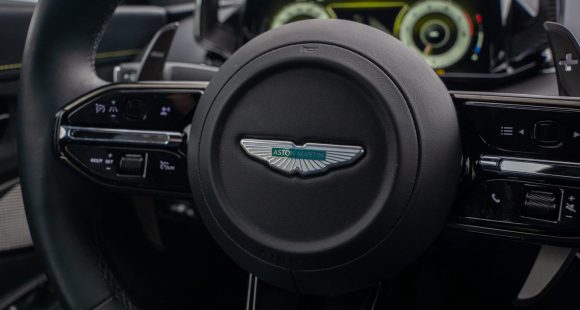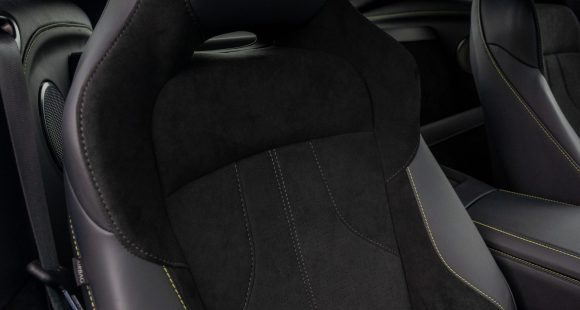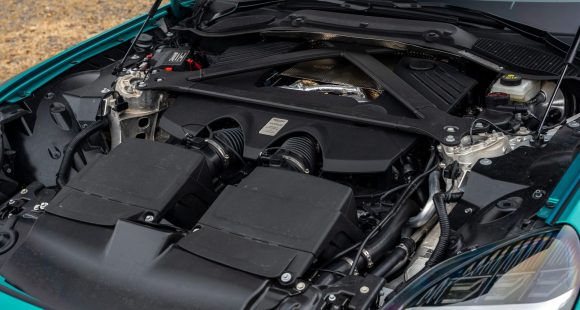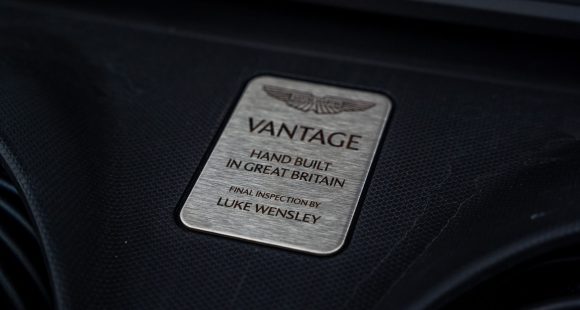2012 Mazda3 SKYACTIV
There have been a slew of new fuel saving power train technologies in recent years from hybrids to full-electrics and even fuel cells. Still, the traditional gasoline or diesel internal combustion engine is far from obsolete, and many would argue it hasn’t come close to its full potential for efficiency, especially when combined with a new whole-vehicle approach to saving fuel. And, that’s just the point of the new Mazda3 SKYACTIV.
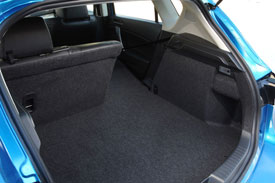 Mazda plans to spread its new SKYACTIV approach across the brand, but it’s the 2012 Mazda3 that is the first to bring much of the technology to market, and that’s fitting as it is Mazda’s best selling model. And one of the big reasons the Mazda3 sedan and 5-Door hatchback are so popular is because of Mazda’s zoom-zoom nature that is fully evident in the 3’s compact chassis. And while that chassis is not all-new for ’12, and therefore doesn’t get the full SKYACTIV effort, it does get an all-new power train, the heart of every fuel saving program.
Mazda plans to spread its new SKYACTIV approach across the brand, but it’s the 2012 Mazda3 that is the first to bring much of the technology to market, and that’s fitting as it is Mazda’s best selling model. And one of the big reasons the Mazda3 sedan and 5-Door hatchback are so popular is because of Mazda’s zoom-zoom nature that is fully evident in the 3’s compact chassis. And while that chassis is not all-new for ’12, and therefore doesn’t get the full SKYACTIV effort, it does get an all-new power train, the heart of every fuel saving program.
The 2-liter SKYACITV-G gasoline I4 puts out 155-horsepower, up 5-percent and 148 pound feet of torque, up 10%; all thanks to both intake and exhaust variable valve timing, direct injection, and a hefty 12-to-1 compression ratio. Low-friction transmissions are new as well, and both manual and automatic are efficient 6-speeds.
All of that makes for Government Fuel Economy Ratings of 28-City and 40-Highway for our SKYACTIV-Drive automatic. That’s a solid 20% boost over the non-SKYACTIV 2.0. The manual rates slightly lower. We average 33 miles-per-gallon of Regular in real world driving. SKYACTIV also helps the Mazda3 get a very good Energy Impact Score, burning through just 10.4-barrels of the black stuff, while emitting just 4.5 tons of CO2 per year.
As to the ‘whole car’ fuel saving aspects, the updated styling also improves aerodynamics. That includes a new front fascia with redesigned grille opening for better airflow management. Additional covers under the car help keep the air moving smoothly as the new Mazda3 sedan cuts through air with 7% less drag than before. SKYACTIV models are also set apart by a transparent blue ring in the headlights, and badging. New 16-inch alloy wheels complete the package.
 The transformation inside the cabin is a bit more thorough. A new instrument cluster adds blue accent lighting and there’s new satin trim throughout. The Multi-Information Display is now easier to read, and there’s a new shifter to go along with the new transmission, as well as new fabric choices for the seats. Touring trim adds Bluetooth and our GT a new 265-watt 10-speaker sound system. The Mazda3 is the only vehicle in this class to offer Blind Spot Monitoring. Rear seat legroom is among best-in-class, but we still felt cramped and the long, wide, flat floor trunk looks as if it would hold more than the 11.8 cubic-feet of cargo that it’s rated for.
The transformation inside the cabin is a bit more thorough. A new instrument cluster adds blue accent lighting and there’s new satin trim throughout. The Multi-Information Display is now easier to read, and there’s a new shifter to go along with the new transmission, as well as new fabric choices for the seats. Touring trim adds Bluetooth and our GT a new 265-watt 10-speaker sound system. The Mazda3 is the only vehicle in this class to offer Blind Spot Monitoring. Rear seat legroom is among best-in-class, but we still felt cramped and the long, wide, flat floor trunk looks as if it would hold more than the 11.8 cubic-feet of cargo that it’s rated for.
While the chassis is unchanged mechanically, some additional reinforcements have been added, as well as extra body welds, which helps to give the already solid feeling Mazda3 an even more unyielding feel. Through the cones, the Electro-Hyrdraulic power steering provided good feel and quick response, and the 3 gripped our cold test track well, even with snow tires. Off the line, the fuel-efficient SKYACTIV power train stood up well. The 2-liter has adequate torque right from the get-go and reached 60 in 8.9-seconds. Power quickly levels out, and the full quarter mile passes in a leisurely 16.9-seconds at 86 miles-per-hour.
As to pricing, a well equipped Mazda3i Touring SKYACTIV 4-door begins at $19,245. That’s only $350 more than a comparable non-SKYACTIV sedan. The hatchback adds $600 more to the base price.
While every manufacturer is now shooting for 40 miles-per-gallon in the compact car segment, Mazda’s whole vehicle approach, which includes not sacrificing driving enjoyment, makes the new Mazda3 a hit with us. And as Mazda expands this approach throughout their line-up, with new lighter-weight chassis’s and even diesel engines, we look forward to getting even more SKYACTIV in the future.
Specifications
- Engine: 2-liter SKYACTIV-G I4
- Horsepower: 155
- Torque: 148 lb-ft.
- 0-60 mph: 8.9 seconds
- 1/4 mile: 16.9 seconds @ 86 mph
- EPA: 28 mpg city/ 40 mpg highway
- Energy Impact: 10.4 barrels of oil/yr
- CO2 Emissions: 4.5 tons/yr
2025 Aston Martin Vantage
Gorgeous Aston Martin Gets Nasty With Performance
Aston Martin has a long history of delivering high-performance vehicles packed with classic British elegance. But with their latest Vantage coupe, Aston Martin has seriously cranked up the performance part of that formula. So, let’s hit the track and see how it all comes together.
We’re ripping through the nine high-speed turns of Savannah’s Roebling Road Raceway as fast as possible, trying to outrun an epic winter storm that’s about to shut down most of the South. And this 2025 Aston Martin Vantage seems to be enjoying it as much as we are. Quite simply, we didn’t expect the Vantage to be this inspired. After all, Aston has used the Vantage name on a variety of vehicles over the years, but this particular coupe arrived for 2019 and gets a proper and prodigious refreshing for 2025.
Visually, it’s an absolutely gorgeous piece of machinery, with the exaggerated proportions that would be borderline cartoonish if they weren’t so exquisitely executed. And despite decades of improving camera technology, our lenses simply can’t truly portray the depth and beauty of this Podium Green paint job, part of the “Racing Line” collection.
Now, it may look all British sports car outside, but it still gets its power from a German V8; AMG’s hand-assembled 4.0-liter twin-turbo unit, and for those keeping score at home its 656-horsepower output is a healthy 128 horsepower increase over last year. It sends its 590 lb-ft of torque to the rear wheels through an eight-speed automatic transmission. Somehow this European union comes out feeling more NASCAR than sports car, as the Vantage is crazy fast and a handful to drive.
For being a GT car at heart, the Vantage has a very dynamic feel to it with way more feedback than the typical Grand Tourer. And considering the last Aston Martin we drove was an SUV, it’s great to be back in a proper British sport coupe that’s willing to get down to business on a racetrack. Even with that monster motor up front, the Vantage’s bonded aluminum structure enables perfect 50:50 weight distribution, and you feel right in the middle of it.
The Vantage has a very dynamic feel to it with way more feedback than the typical Grand Tourer.
A complete suspension overhaul includes Active Vehicle Dynamics with adaptive dampers, an electronic rear differential, and new 21-inch Michelin PS 5s. It all works through Adjustable Traction Control with eight levels of intervention, including full-off if conditions are appropriate. It does have some roll to it, but it feels very natural. Integrated Brake Slip Control modulates braking on turn-ins, and with the Carbon Disc upgrade, braking performance was exceptional once they were warmed up. ABS was quick to trigger until we got some heat into them, after which point their bite was strong and consistent.
The biggest takeaways from our track time: it feels insanely powerful and sounds incredibly ferocious, yet at the same time, it’s so smooth and refined it’s easy forget your speed. Alas, we couldn’t outrun that snowstorm which arrived before we could do any acceleration runs, but we expect the Vantage can do a mass Brexitous to 60 in 3.4 seconds, aided by a new Launch Control system.
It feels every bit as special inside. The cockpit is a little tight, but everything is within easy reach and logically placed. The Mercedes-Benz influence is much less noticeable with an all-new console and center stack. Switchgear and materials feel exquisite and purposeful, with lots of carbon fiber and leather. The 10.3-inch infotainment screen is another big change, as the Vantage gets Aston’s new in-house system first seen in the DB12.
Government Fuel Economy Ratings are 15 City, 22 Highway and 18 Combined.
Vantage pricing starts at $194,500, with plenty of ways to make that number climb in a hurry.
Staying true to the brand while absolutely tearing up a racetrack, well, you really can’t ask for anything more than that. That’s what makes the 2025 Aston Martin Vantage so special. It’s a great place to spend your high-performance dollars if you’re looking for something a little different, but with even more of the familiar thrills.
Specifications
As Tested
- Engine: 4.0-liter twin-turbo V8
- Transmission: 8-speed automatic
- 0-60 mph: 3.4 seconds
- Horsepower: 656
- Torque: 590 lb-ft




